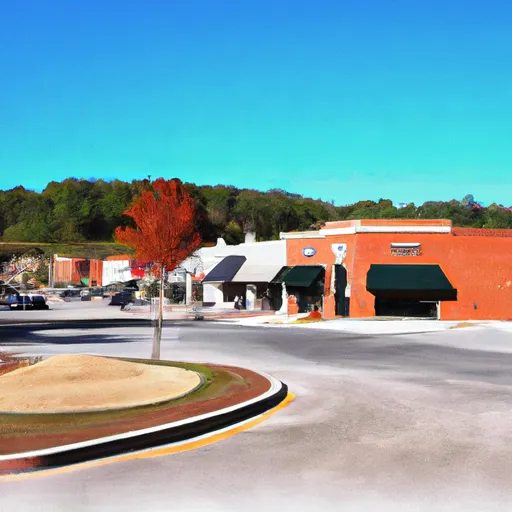-
 Snoflo Premium
Snoflo Premium
Get unlimited access to all our content
With no Ad interruptions! - Start Your Free Trial Login with existing account
Cave-Spring
Eden Index
Climate
7.8
•
Recreation
3.8
•
Community
2.1
•
Safeguard
5.0/10

Cave Spring is a small town located in northwest Georgia. The climate in Cave Spring is mild with hot summers and cold winters. The area is known for its abundant water supply from the limestone aquifer, which is rich in calcium and magnesium. Outdoor recreation opportunities include hiking, fishing, and kayaking. The town's most notable feature is the historic Cave Spring, which is a natural limestone cave that was once used as a source of drinking water. Additionally, the nearby Georgia Pinhoti Trail offers scenic hiking opportunities in the surrounding forests. Other nearby attractions include the Cave Spring Museum and the Rolater Park, which has a natural spring-fed pool.
What is the Eden Index?
The Snoflo Eden Index serves as a comprehensive rating system for regions, evaluating their desirability through a holistic assessment of climate health, outdoor recreation opportunities, and natural disaster risk, acknowledging the profound impact of these factors on livability and well-being.
Climate Health Indicator (CHI): 7.8
Cave-Spring receives approximately
1323mm of rain per year,
with humidity levels near 83%
and air temperatures averaging around
16°C.
Cave-Spring has a plant hardyness factor of
7, meaning
plants and agriculture in this region tend to thrive during the non-winter months.
By considering the ideal temperature range, reliable water supplies, clean air, and stable seasonal rain or snowpacks, the Climate Health Indicator (CHI) underscores the significance of a healthy climate as the foundation for quality living.
A healthy climate is paramount for ensuring a high quality of life and livability in a region, fostering both physical well-being and environmental harmony. This can be characterized by ideal temperatures, reliable access to water supplies, clean air, and consistent seasonal rain or snowpacks.
Weather Forecast
Streamflow Conditions
Coosa-Tallapoosa
Area Rivers
Coosa-Tallapoosa
Snowpack Depths
Coosa-Tallapoosa
Reservoir Storage Capacity
Coosa-Tallapoosa
Groundwater Levels
Recreational Opportunity Index (ROI): 3.8
The Recreational Opportunity Index (ROI) recognizes the value of outdoor recreational options, such as parks, hiking trails, camping sites, and fishing spots, while acknowledging that climate plays a pivotal role in ensuring the comfort and consistency of these experiences.
Access to outdoor recreational opportunities, encompassing activities such as parks, hiking, camping, and fishing, is crucial for overall well-being, and the climate plays a pivotal role in enabling and enhancing these experiences, ensuring that individuals can engage in nature-based activities comfortably and consistently.
Camping Areas
| Campground | Campsites | Reservations | Toilets | Showers | Elevation |
|---|---|---|---|---|---|
| Amity | None | 689 ft | |||
| Chewacla State Park | None | 516 ft | |||
| Blue Springs State Park | 50 | 306 ft | |||
| Whitetail Ridge | None | 694 ft | |||
| John Tanner State Park | None | 1,094 ft | |||
| Burnt Village | 120 | 687 ft | |||
| Spring Villa Campground | 24 | 604 ft | |||
| Pyne Road Park | 24 | 711 ft | |||
| R Shaefer Heard | None | 640 ft | |||
| White Oak Creek | None | 237 ft |
Nearby Fishing
Nearby Ski Areas
Catastrophe Safeguard Index (CSI):
The Catastrophe Safeguard Index (CSI) recognizes that natural disaster risk, encompassing floods, fires, hurricanes, and tornadoes, can drastically affect safety and the overall appeal of an area.
The level of natural disaster risk in a region significantly affects safety and the overall livability, with climate change amplifying these risks by potentially increasing the frequency and intensity of events like floods, fires, hurricanes, and tornadoes, thereby posing substantial challenges to community resilience and well-being.
Community Resilience Indicator (CRI): 2.1
The Community Resilience Indicator (CRI) recognizes that education, healthcare, and socioeconomics are crucial to the well-being of a region. The CRI acknowledges the profound impact of these elements on residents' overall quality of life. By evaluating educational resources, healthcare accessibility, and economic inclusivity, the index captures the essential aspects that contribute to a thriving community, fostering resident satisfaction, equity, and social cohesion.

